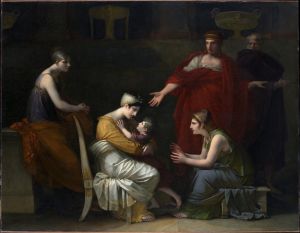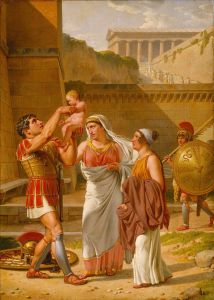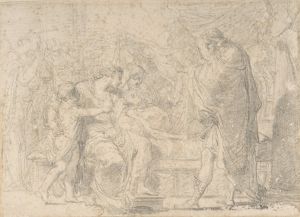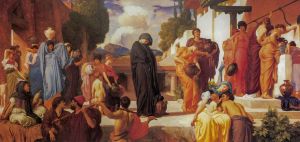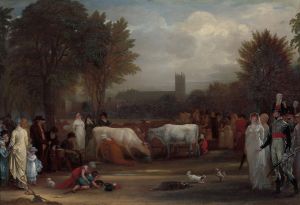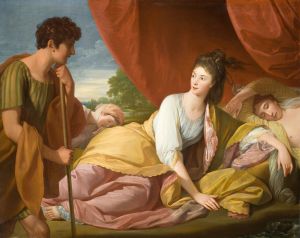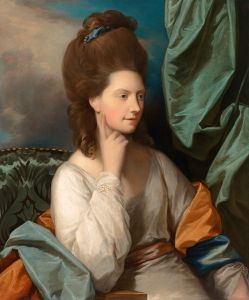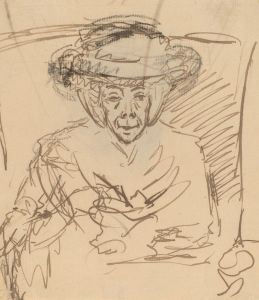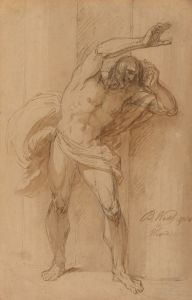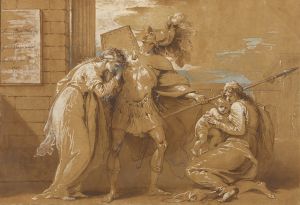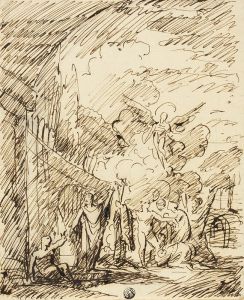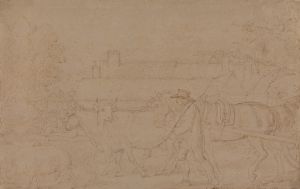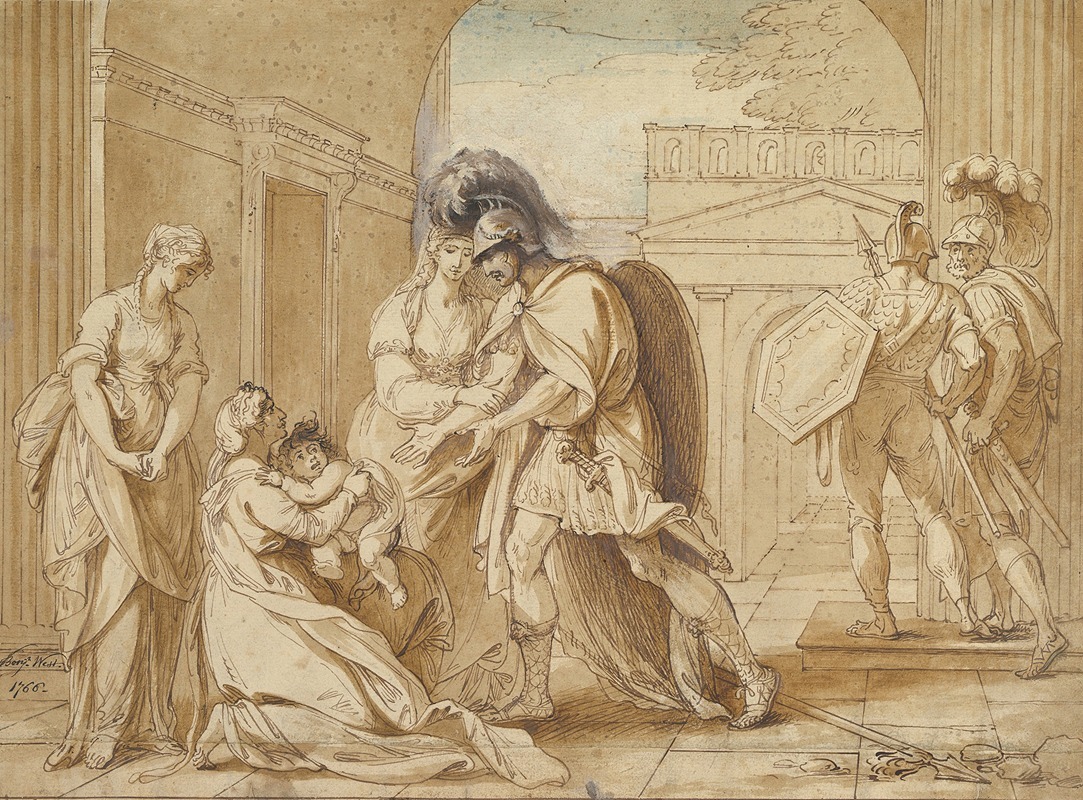
Hector taking leave of Andromache; the Fright of Astyanax
A hand-painted replica of Benjamin West’s masterpiece Hector taking leave of Andromache; the Fright of Astyanax, meticulously crafted by professional artists to capture the true essence of the original. Each piece is created with museum-quality canvas and rare mineral pigments, carefully painted by experienced artists with delicate brushstrokes and rich, layered colors to perfectly recreate the texture of the original artwork. Unlike machine-printed reproductions, this hand-painted version brings the painting to life, infused with the artist’s emotions and skill in every stroke. Whether for personal collection or home decoration, it instantly elevates the artistic atmosphere of any space.
Hector Taking Leave of Andromache; the Fright of Astyanax is a painting created by the Anglo-American artist Benjamin West in 1773. The artwork depicts a poignant scene from Homer's Iliad, specifically the moment when Hector, the Trojan prince and warrior, bids farewell to his wife, Andromache, and their young son, Astyanax, before returning to battle during the Trojan War.
In this neoclassical painting, West captures the emotional intensity of the narrative. Hector, clad in armor, is shown embracing Andromache, who appears distraught as she clings to him, pleading for him to stay. Their son, Astyanax, is portrayed recoiling in fear at the sight of his father’s warlike appearance, particularly his helmet. This detail emphasizes the human cost of war and the vulnerability of familial bonds in the face of impending tragedy.
Benjamin West, known for his historical and neoclassical works, was a prominent figure in the art world of the 18th century. Born in Pennsylvania in 1738, he later moved to England, where he became the second president of the Royal Academy of Arts. His works often drew upon classical and biblical themes, and he was celebrated for his ability to convey dramatic narratives through his compositions.
The painting reflects the neoclassical style, which was characterized by its focus on classical antiquity, balanced compositions, and an emphasis on emotional restraint. West’s use of light and shadow, as well as his attention to detail in the figures’ expressions and gestures, enhances the emotional impact of the scene. The work also aligns with the 18th-century fascination with themes of heroism, virtue, and the moral dilemmas faced by individuals in epic tales.
The painting is part of the collection of the Yale Center for British Art in New Haven, Connecticut. It is considered an important example of West’s ability to blend classical themes with a sense of human emotion, making the ancient story accessible to contemporary audiences of his time.
This artwork remains a significant piece in the study of neoclassical art and Benjamin West’s oeuvre, illustrating his mastery in storytelling and his contribution to the development of historical painting in the 18th century.





